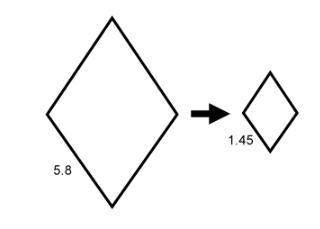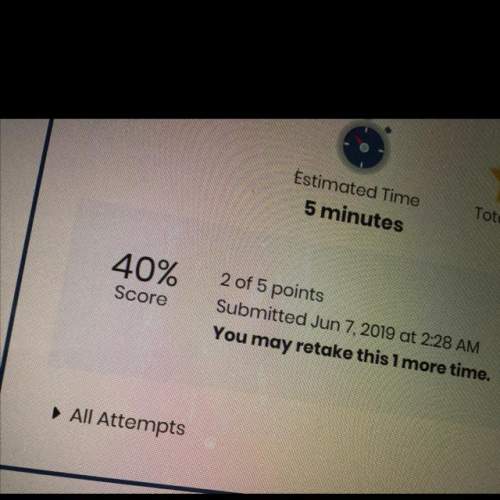which statement is true?

Mathematics, 29.11.2019 06:31 areeves39276
The first figure is dilated to form the second figure.
which statement is true?
the scale factor is 0.25.
the scale factor is 4.
the scale factor is 4.35.
the scale factor is 7.25.


Answers: 3


Other questions on the subject: Mathematics

Mathematics, 21.06.2019 23:30, cam6877
Katie wants to collect over 100 seashells. she already has 34 seashells in her collection. each day, she finds 12 more seashells on the beach. katie can use fractions of days to find seashells. write an inequality to determine the number of days, dd, it will take katie to collect over 100 seashells.
Answers: 1

Mathematics, 22.06.2019 00:40, Abrow484
Afootball quarterback has two more chances to throw a touchdown before his team is forced to punt the ball. he misses the receiver on the first throw 25% of the time. when his first throw is incomplete, he misses the receiver on the second throw 15% of the time. what is the probability of not throwing the ball to a receiver on either throw?
Answers: 2

Mathematics, 22.06.2019 03:00, adrianVocke5685
The blue segment below is a diameter of o. what is the length of the radius of the circle?
Answers: 1

Mathematics, 22.06.2019 03:00, kittenlover5031
In this problem, we explore the effect on the standard deviation of multiplying each data value in a data set by the same constant. consider the data set 14, 6, 8, 15, 15. (a) use the defining formula, the computation formula, or a calculator to compute s. (round your answer to one decimal place.) s = 4.28 (b) multiply each data value by 3 to obtain the new data set 42, 18, 24, 45, 45. compute s. (round your answer to one decimal place.) s = 12.83 (c) compare the results of parts (a) and (b). in general, how does the standard deviation change if each data value is multiplied by a constant c? multiplying each data value by the same constant c results in the standard deviation remaining the same. multiplying each data value by the same constant c results in the standard deviation being |c| times as large. multiplying each data value by the same constant c results in the standard deviation increasing by c units. multiplying each data value by the same constant c results in the standard deviation being |c| times smaller. (d) you recorded the weekly distances you bicycled in miles and computed the standard deviation to be s = 3.8 miles. your friend wants to know the standard deviation in kilometers. do you need to redo all the calculations? yes no given 1 mile ≠1.6 kilometers, what is the standard deviation in kilometers? (enter your answer to two decimal places.)
Answers: 1
You know the right answer?
The first figure is dilated to form the second figure.
which statement is true?
which statement is true?
Questions in other subjects:


Mathematics, 16.06.2021 14:00


Biology, 16.06.2021 14:00

Mathematics, 16.06.2021 14:00

Physics, 16.06.2021 14:00

English, 16.06.2021 14:00

Mathematics, 16.06.2021 14:00





